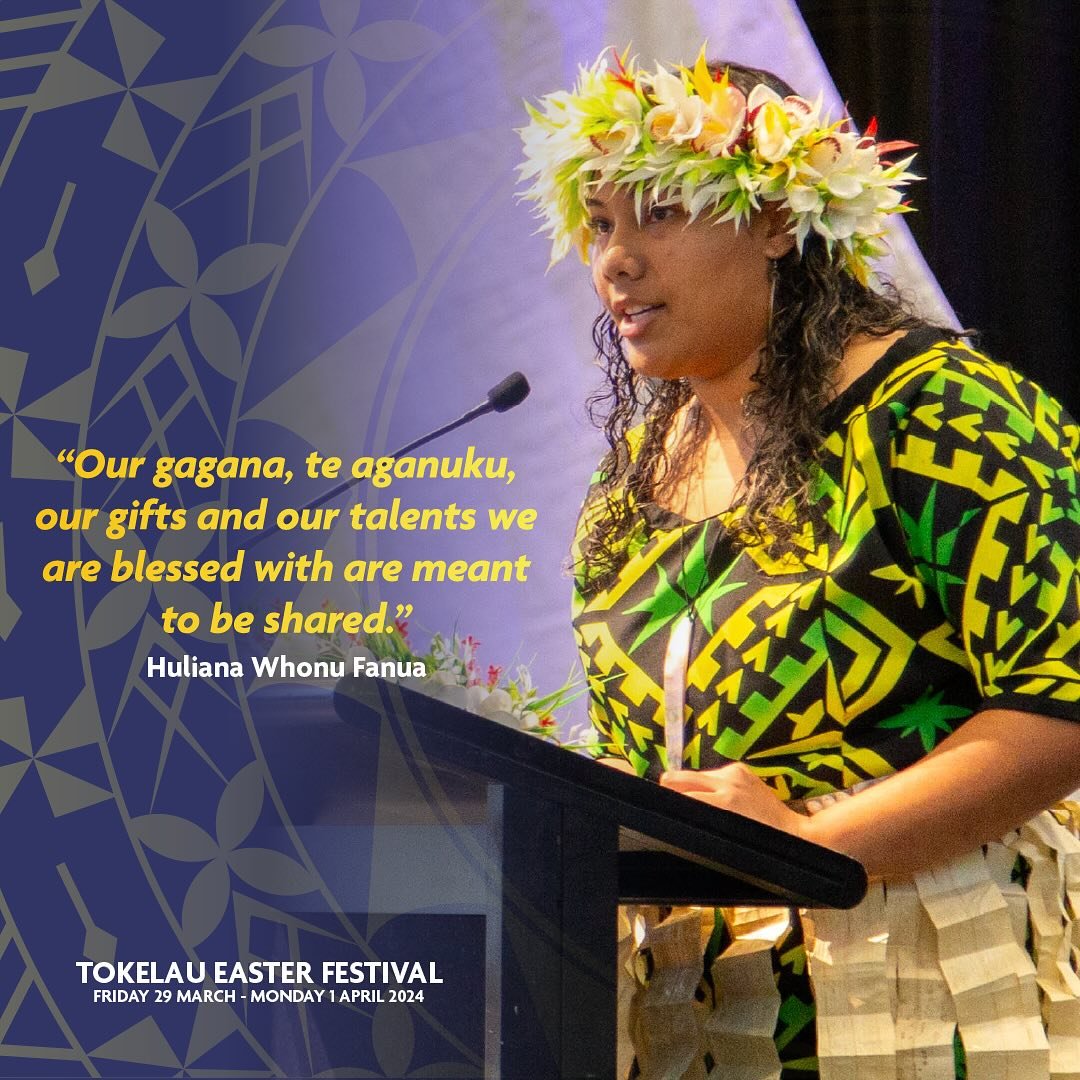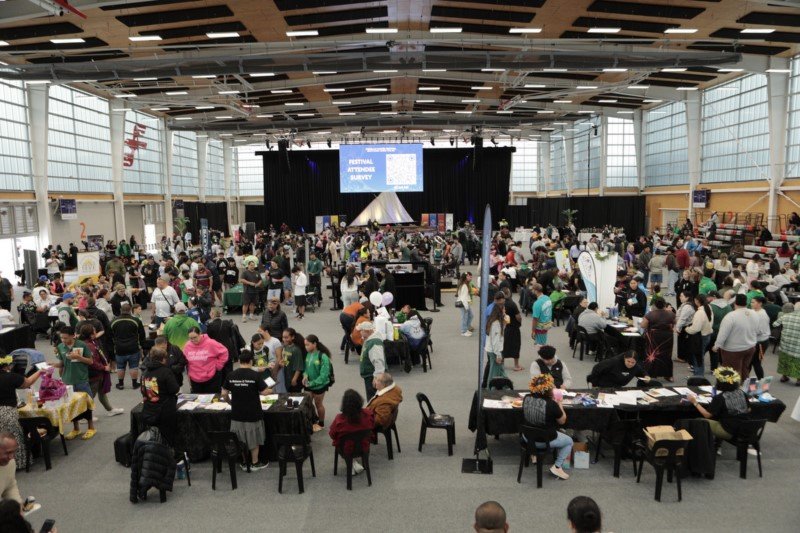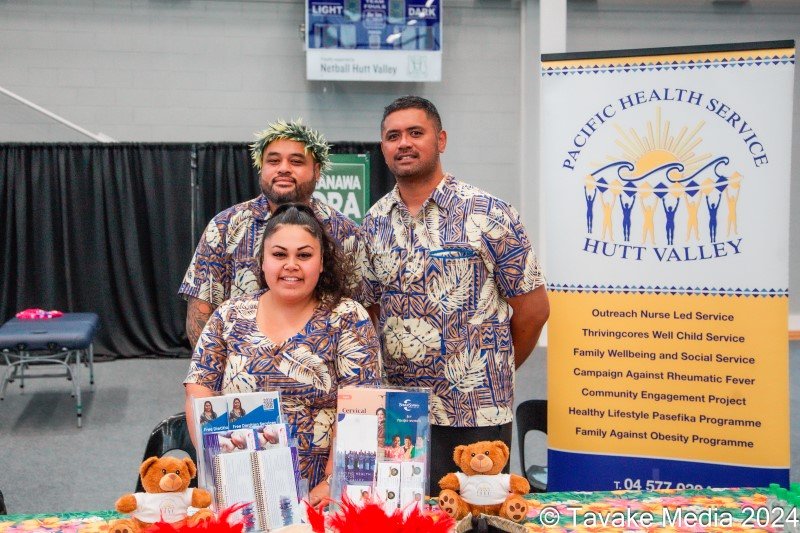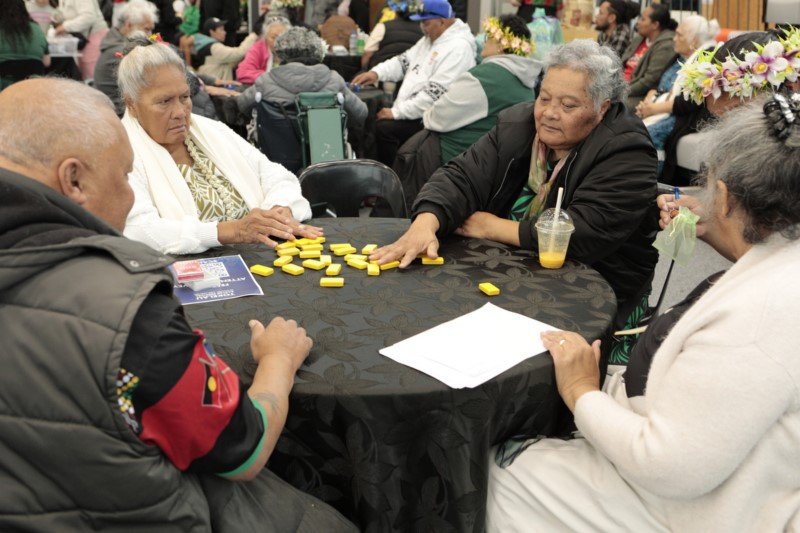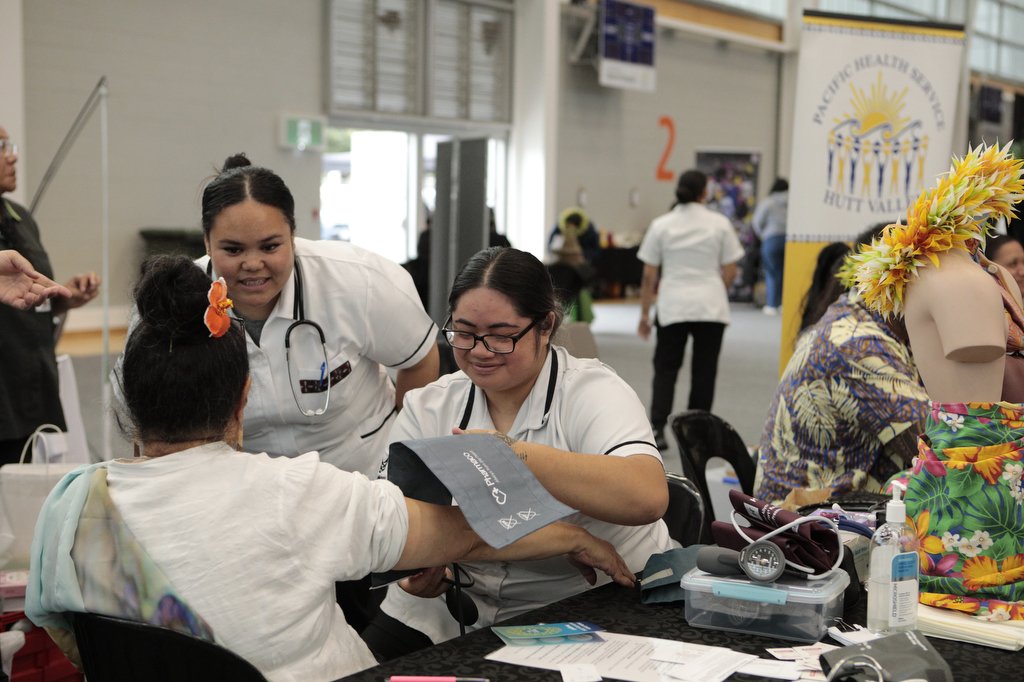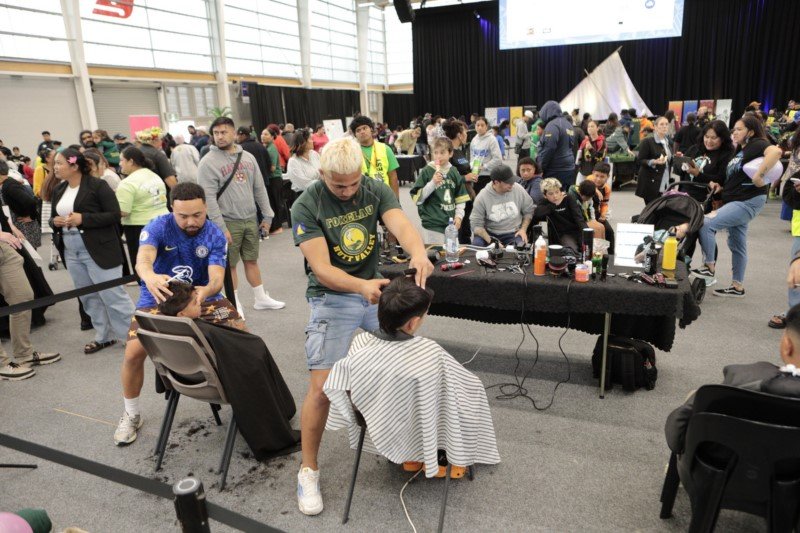Weaving movement and cultural connections at Tokelau Easter Festival
Over Easter Weekend, Lower Hutt saw up to 18,000 people attend the 19th Tokelau Easter Festival from across New Zealand, Australia and Tokelau affiliated to the Mafutaga Tupulaga Tokelau Niu Hila: Auckland, Rotorua, Taupo, Manawatu, Porirua, and Hutt Valley. Officially opened by Mana Whenua, Kaanihi Butler-Hare on behalf of Te Ati Awa and Te Ulu o Tokelau Afioga Aliki Faipule, Alapati Tavite, the festival was designed to inspire cultural pride and empower youth leadership through initiatives such as fatele (cultural dancing), kāiga (family) wellbeing workshops and sports.
Tokelau Easter Festival 2024 opening ceremony MC’s and Keynote Speakers. From left: Petronila Poasa, Te Ulu o Tokelau Alapati Tavite, Moana Pasifika CEO Pelenato Sakalia and Dr Silivia Tavite. TAVAKE MEDIA
The Po Fatele (cultural dancing) night was the most popular event which featured over 850 performers, ranging from as young 3 years old to over 70 years old, from various Tokelau communities. Tokelau’s style of dance involves different types of movement which starts slow and builds up in speed, movement and energy.
Selina Alesana Alefosio and Isitolo Alesana led the Tokelau Hutt Valley Marlins group. With years of experience in cultural performance and travelling around the world, Selina and Isitolo inspired performance fitness during preparation which involves building stamina and strength to perform at the best of their ability.
“As Tokelau movement tutor, I’m big on learning all your basics and knowing lyrics, tunes and correct actions inside out before you can even attempt transitions, so in the beginning we worked through the Tokelau basics of movement with the hands, back and core and incorporated fun exercises that worked in a solid body memory of movements for our performers.
“Majority of our performers were new and it was their first ever festival, so first and foremost it was very important that we engaged with our tupulaga to ensure we had an enjoyable and authentic experience. Their collective talents and skills that was recognised by our elders and I’m grateful to all the hands and hearts that served their community with humility and integrity” Selena adds.
Heritage, language and culture are powerful platforms for mobilising intergenerational collaboration and self-determination. Festivals and cultural events in Aotearoa like the Tokelau Easter Festival, ASB Polyfest and Te Matatini increases access to quality active experiences that are driven by Māori and Pacific expertise.
Tokelau Hutt Valley Marlins performing at the Po Fatele night. ADRIAN WATKINS
Connecting to the culture as an Aotearoa-born Tokelauan
Outside the realm of physical activity, the festival had a strong focus on empowering youth to connect with their cultural roots and become leaders within their communities. The festival’s theme was ‘Ko te Tupulaga a Tokelau, ko te lumanaki o Tokelau – our Tokelau young people are the future leaders of Tokelau’.
Many Tupulaga youth are multi-ethnic or have a mix of Māori and Pacific heritage and said that this festival helped them gain a deeper understanding of how their culture can serve as a source of strength and resilience in navigating life as an Aotearoa-born Tokelauan.
This Tokelau Easter Festival was first celebrated in 1982 and the Covid pandemic put a pause on celebrating this momentous event, with the last festival held in 2017. For many attendees, it was their first Tokelau Easter Festival which involved generations of grandparents and great grandparents that laid the foundations for the Tokelau community when they first migrated to Petone, Lower Hutt from Tokelau in the 1960s.
Tokelau Hutt Valley Sports and Culture Association President, Akenehe Pereira and Tupulaga Youth Warriors Huliana Fanua and Te Atatu Patelesio speaking on the importance of Tokelau culture and youth leadership at the opening ceremony. TOKELAU EASTER FESTIVAL 2024 MTTNH
Kāiga Wellbeing Expo
The theme for Day 3 of the festival was ‘Kāiga nofo lelei – family wellbeing and drawing strength from and within kāiga wellbeing.
Tokelau Hutt Valley Marlins hosted a kāiga-centric wellbeing expo that aimed to weave the strategic intentions set in the Kāiga Tokelau Wellbeing National Strategic Plan 2022-2026 and the Tokelau Hutt Valley Te Lumanaki Youth and Development Strategy.
Read Kāiga Tokelau Wellbeing National Strategic Plan 2022-2026
Read Tokelau Hutt Valley Te Lumanaki Youth and Development Strategy
The expo involved local health providers and local Pacific and Māori businesses to help educate the community around Hauora, healthy homes, financial wellbeing and holistic wellbeing.
Pacific Systems Innovator, Mele Tonga-Grant saw mokopuna through to great-grandparents connecting through talanoa, games and physical activity based around their hauora. This included health checks and immunisations, fagatua (wrestling) workshops and financial wellbeing workshops to ensure families understood how to use their resources well to get kai and a roof over their heads.
“What stood out for me was that everyone could get what they needed in terms of family, culture, education, employment, faith, housing and health which have been highlighted as key ambitions in the Kāiga Wellbeing Strategy. Many weren’t aware of the different services they could access and it made a difference bringing the services out to where our community were - there were trusted people and familiar faces that our community could talk with.”
Kāiga wellbeing expo highlights. ADRIAN WATKINS
